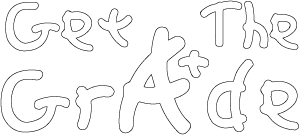Absorbing Nutrients
Here, we get to learn about two other incredible systems in our bodies.
The respiratory system allows us to bring oxygen in our bodies and breathe out CO2. This is done using the lungs.
The digestive system allows us to absorb water and nutrients from our food.
Effective absorption of nutrients, oxygen, water etc, is achieved with large surface areas. Areas that require exchange of nutrients also require thin walls and a large blood supply.
Gas Exchange and the Lungs
Gas exchange in allows the absorption of oxygen and the expiration (breathing out) of carbon dioxide.
The lungs are two large organs in your chest that expand and shrink with every breath you take. They are gas exchange organs.
Air travels from the air, into your mouth, down your trachea, into your bronchi (in the lungs), which lead to small air sacs called alveoli. There are many, many alveoli in the lungs, which provide a large surface area, perfect for efficient exchange of gasses.
Oxygen travels through the thin alveolar walls into blood capillaries.
CO2 also travels from blood capillaries in the lungs through the alveolar walls to be breathed out.
Digestion and the Small Intestine
The digestion system runs from your mouth to your back passage. The digestive system is extremely clever and vital for our survival.
The digestive system is in charge of absorbing nutrients and water from our food and drink. Food is broken down in the stomach and travels to the small intestine, where nutrients are absorbed.
The small intestine is very efficient at absorbing nutrients as it has a large surface area. The small intestine has a length of around 22 feet, and has microscopic, thin walled protrusions from the surface of the intestine called villi.
There are thousands of villi in the small intestine, which allow a large surface area for absorption of amino acids, fatty acids, glycerol and glucose.
The villus has a network of capillaries which absorb amino acids and glucose.
The villus also has a lacteal, which absorbs fatty acids and glycerol.
Key Points!
-
Absorbing Nutrients
The respiratory system allows us to bring oxygen in our bodies and breathe out CO2. This is done using the lungs.
The digestive system allows us to absorb water and nutrients from our food.
Effective absorption of nutrients, oxygen, water etc, is achieved with large surface areas. Areas that require exchange of nutrients also require thin walls and a large blood supply.
-
Gas Exchange and the Lungs
Gas exchange in allows the absorption of oxygen and the expiration (breathing out) of carbon dioxide.
The lungs are two large organs in your chest that expand and shrink with every breath you take. They are gas exchange organs.
Air travels from the air, into your mouth, down your trachea, into your bronchi (in the lungs), which lead to small air sacs called alveoli. There are many, many alveoli in the lungs, which provide a large surface area, perfect for efficient exchange of gasses.
Oxygen travels through the thin alveolar walls into blood capillaries.
CO2 also travels from blood capillaries in the lungs through the alveolar walls to be breathed out.
-
Digestion and the Small Intestine
The digestive system is in charge of absorbing nutrients and water from our food and drink. Food is broken down in the stomach and travels to the small intestine, where nutrients are absorbed.
There are thousands of villi in the small intestine, which allow a large surface area for absorption of amino acids, fatty acids, glycerol and glucose.
The villus has a network of capillaries which absorb amino acids and glucose.
The villus also has a lacteal, which absorbs fatty acids and glycerol.


